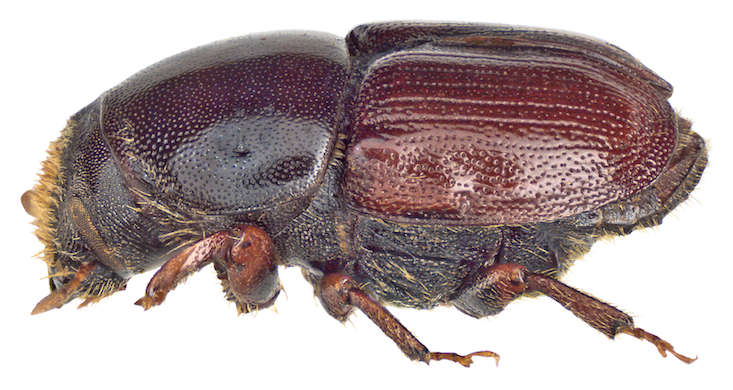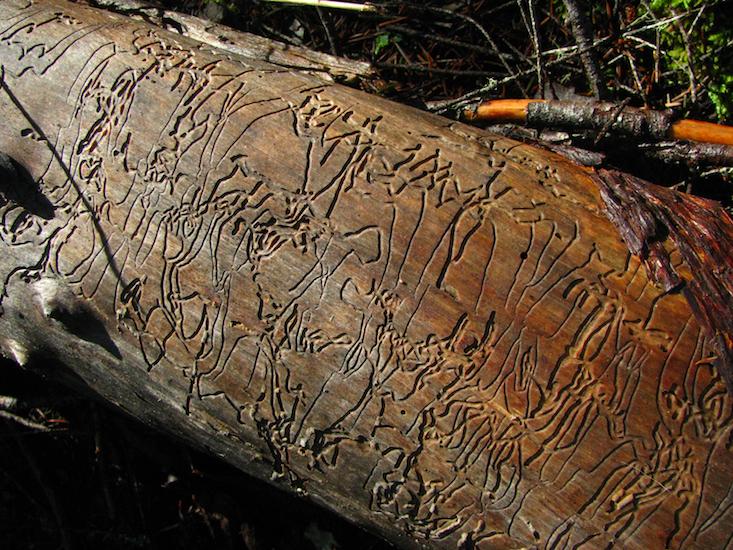To many people in New York City, a beautiful summer day is all about the trees. To be more specific, the American elm trees in the Central Park Mall, which form a promenade through the heart of the park. “Everybody’s always impressed by the wonderful cathedral-like ceiling of the Mall, especially if they’re new to that,” says Edward Sibley Barnard, co-author of Central Park Trees and Landscapes.

The beauty, though, is not everlasting. Like elm trees across the globe, the elms in Central Park are stricken with a ruthless beetle–fungus alliance known as Dutch elm disease. In the early 1980s, the park was losing more than 100 elms—American and other species—each year. Today, thanks to diligent monitoring and eradication by the Central Park Conservancy, the death rate is much lower—sometimes in the single digits—although bad years can still claim as many as 35 trees.
Despite rigorous efforts to maintain the Central Park elms in all their glory, scientists still can’t stamp out the disease. Botany labs are hard at work on cures, including one that could “freeze the biology” of the trees to trip up evolution. But the nature of Dutch elm disease makes it a tough opponent.
Dutch elm disease snuck into the United States in the early 1930s in a shipment of imported furniture, as many other tree pathogens have. Dutch elm disease quickly swept along the country’s main streets, decimating the American elms that lined them. The elms lining the Mall “would have gone long ago if we had not been so active in protecting it,” says Barnard’s Central Park Trees co-author Neil Calvanese, who oversaw operations, including tree care, at the Central Park Conservancy for three decades. Each summer, sentinels on the Central Park horticulture team must temper their admiration for the Mall’s scenery, lest they be distracted from seeing any sign of Dutch elm disease—yellowing, browning, or even simply wilting leaves.
The infection starts at the very top of an elm. The fungus, hitching a ride on either an elm bark beetle (Hylurgopinus rufipes) or the European elm bark beetle (Scolytus multistriatus), spreads its spores whenever its beetle searches for a healthy elm twig to call home. As the beetle settles in, the fungus takes root. It streaks the wood brown and releases harmful chemicals, like cerato-ulmin, which wilts the leaves, starting at the far reaches of the tree’s canopy and spreading toward the trunk. Once there, it blocks the channels that carry the tree’s water and nutrients, causing the botanic equivalent of clogged arteries.

If the fungus is allowed to linger, not only does it eventually kill the tree, it also makes the tree more appealing to non-fungus-carrying beetles. These carve little caverns, sometimes quite beautifully, under the tree’s bark where they lay their eggs—creating the next generation of the disease: First as a larva inside the dying tree, then as a grown beetle seeking a new elm’s canopy, they spend their lives coated in the fungus. Depending on how long the summer heat lasts, one year can see two or even three generations of fungus-ridden beetles descend on American elms. Their life cycles aren’t synchronized like those of “tree crickets,” or cicadas, in Latin, so there can be infected beetles looking for new homes throughout the season. And at the end of the summer, the fungus can batten down the hatches, waiting out the winter then returning with a vengeance.

Since Central Park had—and still has—“one of the most magnificent collections of elms anywhere,” says Calvanese, protecting them “was our focus” when the Central Park Conservancy, which takes care of the trees, was formed in the 1980s. All told, the park is home to 2,000 elms of several species—American, European, and Chinese. Though they are uniquely shielded from the sweeping fungus thanks to the encircling glass, concrete, and asphalt that buffer them from wandering beetles, Calvanese says, as long as Dutch elm disease exists, these trees are in danger.
There’s no way to inoculate living trees against the infection, so vigilance is key. “The thing is, it’s so random, it just strikes anywhere,” says Calvanese. “A beetle blows into the park and there you have it, another year of Dutch elm disease.” So, says Calvanese, “We’re always monitoring” the elm trees, hence the patrols throughout the summer. “You can prune out infections,” he says. The trick is to cut the branch back, over and over again, until you reveal 15 feet of unstained, unblemished wood. “If you do that there’s a good chance that you could save the tree,” he says.
“If we freeze the biology of the tree, it is quite likely a tree susceptible today may be resistant because the fungus has moved on.”
What may finally blunt the ax of Dutch elm disease is genetic tinkering. Elm-lovers, almost as soon as the disease started racing across America, began trying to breed elms that could survive infection, first with indirect techniques, like cross-breeding the least susceptible American elms they could find, and now with more-direct ones, like inserting genes that offer the trees some defense against Dutch elm. They’ve made some progress, but not quite succeeded. “There’s no really resistant elm known,” says Praveen Saxena, a horticulturist at the University of Guelph, in Canada. The so-called resistant strains or ‘cultivars,’ are better labeled ‘highly tolerant,’” he says.
These cultivars, like Princeton and Valley Forge, are still proving how well they thrive on their own. While the Central Park Conservancy has been using them to replace lost trees since the 1980s, they still need to be watched. Saxena hopes his experience cloning trees can help develop and popularize ever more resistant cultivars. “It’s an ongoing battle, so no claims here that we’ll be able to do it,” says Saxena. “But we’re trying.”
If that doesn’t work, he’s got a back-up plan: waiting out the plague. Because the fungus responsible for Dutch elm disease evolves faster than the trees can, he could develop a cryopreservation program, he says, that would allow today’s trees to thrive decades down the line. It’s like a time capsule that elms can access but the fungus can’t. “If we freeze the biology of the tree,” says Saxena, “it is quite likely a tree susceptible today may be resistant because the fungus has moved on.”
Calvanese, retired from caring for the Mall’s elms, hopes it never comes to that. The trees may require vigilance and a willingness to perform arboreal amputations, but it’s hardly the only species with “issues,” he says, citing the plagues that hit trees like maples, willows, and ash. “I think people should still plant an elm—the most majestic, the most delicate” trees, he says. “We have a real good shot to preserve these trees right through the 2000s.”
Meghan Bartels is a science journalist based in New York City. Follow her on Twitter @meghanbartels.






























